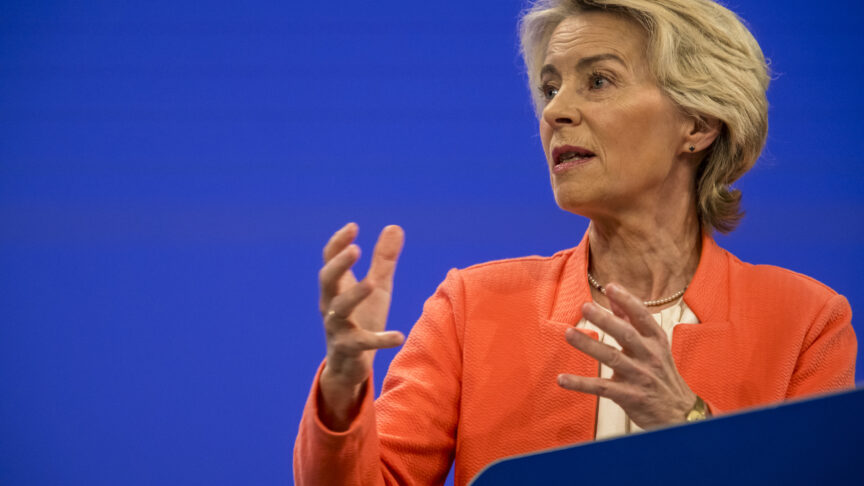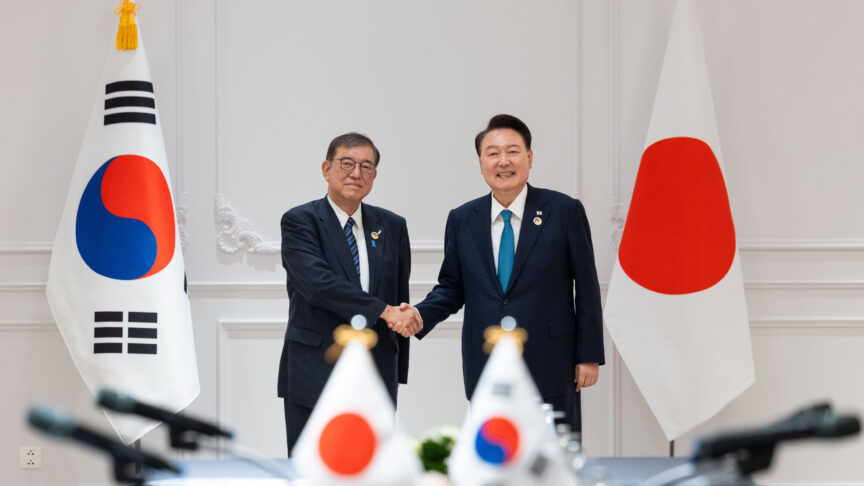Aiding competition: The geopolitics of humanitarian aid and disaster relief in the Indo-Pacific
Disaster relief efforts in the Indo-Pacific are quickly becoming a space for geopolitical competition, especially between the US and China. Europeans should watch closely, working to showcase their own usefulness to the region while helping to reduce its dependencies on China
As the region most vulnerable to natural disaster, the Indo-Pacific often depends on humanitarian aid and disaster relief (HADR) from the United States, China, the European Union, and other international actors. But amid escalating global tensions, HADR operations are transforming from a cooperative activity between aid-providing countries into a competition for influence. For the most part however, only China and the US have realised HADR’s strategic potential. For these players, the speed of intervention is now a factor not only in humanitarian effectiveness, but also in geopolitical strength. Disaster relief operations demonstrate the intervening country’s level of commitment to the recipient, facilitate operational and political access to the recipient country, and showcase the aid-giver’s capabilities. They also offer opportunities for coalition-building with partners: as countries turn to their militaries to carry out relief operations, governments can work on increasing military interoperability with allies in a context perceived as less threatening by neighbouring countries. In this respect, HADR activities are blurring the lines between soft and hard power.
In the Indo-Pacific, this is most clear in the rivalry between the US and its allies on the one hand, and China on the other, and to a lesser extent the rivalry between China and India. The US is the region’s main supplier of HADR. Between 1991 and 2024, US armed forces responded to around 40 natural disasters in some 17 Indo-Pacific countries. [1] This military aid has mainly been directed towards the Indian ocean, and rarely towards the Pacific ocean, where US partners Australia, New Zealand, and France are more present. More recently however, China’s economic and military growth has allowed it to increase its HADR contribution, intervening in 16 disasters in 13 Asian countries between 2002 and 2019. The majority of these operations were in the northern Indian Ocean, mainly in countries where China is in direct rivalry with the US (such as Pakistan), or with India (such as Bangladesh, the Maldives, and Nepal), and where it is relatively easy for China to mobilise its HADR capabilities.
In many ways, a country’s desire to increase its geopolitical influence has come to dictate its disaster relief operations’ concrete objectives and the means of implementing them. Extracting greater influence means combining HADR operations with diplomatic, media, and promotional efforts that highlight the aid-giver’s positive role. The one-off, time-limited nature of these operations makes the success of these efforts all the more important. In this short-term race for influence, the US is leading, but this is only half the picture. Linking HADR operations to longer-term projects can greatly extend the life span of the aid-providing country’s influence: for example, implementing projects to mitigate the damage caused by exceptional events such as the construction of infrastructure or the strengthening of disaster relief capacities. In this approach, China stands out from its competitors as it categorises HADR as international development, and as part of its wider Belt and Road Initiative.
In some cases however, the state receiving aid may perceive the risks of HADR intervention, and subsequently, of third-country influence, as too great, especially in regards to China’s approach. For example, in 2018, Indonesia refused the deployment of Chinese military resources following the earthquake and tsunami that hit the country. In other cases, receiving the aid may be an opportunity to keep diplomatic relations, however tenuous, alive: in 2013, the Philippines agreed to the deployment of a Chinese military hospital ship after Typhoon Haiyan, even though bilateral relations were strained at the time, so as not to give the impression of siding with the US.
Unlike the US or China, the European Union and its member states have made little effort to capitalise politically on HADR operations, and are therefore seen by recipients as having little geopolitical risk or opportunity. France, for example, took part in the response to the volcanic explosion in Tonga in January 2022 as part of its mechanism with Australian and New Zealand (FRANZ), of which it was then president. But while France was able to mobilise the EU’s Civil Protection Mechanism, and its action was swift and appreciated by its partners, the resources deployed did not match those of Australia and New Zealand. What’s more, as the operation was initially deployed in the absence of any communication (which only came later), Canberra and Wellington were initially given full credit, without France or the EU gaining a mention.[2]
Unlike the US or China, however, the European Union and its member states have made little effort to capitalise politically on HADR operations
While the EU seeks an increased engagement in the Indo-Pacific region, it could think about how to raise its profile in HADR engagement to maximise its political influence, both with the countries receiving its aid and with its main operational partners, like Australia and New Zealand. But as things stand, the EU has not fully recognised the strategic dimension of its Indo-Pacific foreign policy. Because of this, it has failed to develop a strategy tailored to the region’s economic interests and power rivalries. This lack of foresight contributes to a de facto marginalisation of the EU as a security actor in the region and, in part, prevents it from devising a counter-influence strategy to China’s Indo-Pacific policy.
To realise the full geopolitical potential of its HADR operations, the EU should adopt a longer-term approach by strengthening its regional organisations and capacity-building programmes in the coastal states of the Indo-Pacific. The former could be done by developing specific dialogues on the civil-military dimensions of HADR with partner countries in the region. As for the latter, Europeans should better analyse coastal states’ needs to inform a more effective and sustainable capacity-building approach between the EU and recipient countries.
Europeans should also support recipient countries’ growing desire to have greater decision-making power in terms of policy direction and existing avenues of cooperation in the HADR field.[3] For smaller Indo-Pacific countries to realise this agency, greater diplomatic efforts to strengthen regional organisations will be crucial. Alongside this, more capacity-building programmes would provide a forum in which states can share skills and knowledge, to further build their autonomy in the management of natural disasters. While this would not directly bolster European influence in the region, it would build Indo-Pacific states’ own disaster response capabilities, and subsequently weaken their dependency on China and other major powers.
At the same time, the EU should pay greater attention to its communication and public diplomacy of its HADR efforts, in particular by highlighting the concrete actions that have been implemented via its funding strategy. This way, next time disaster strikes, Europeans will be ready to not only lend a helping hand, but show that they are doing so.
[1] Based on author’s research of US natural disaster response efforts in the Indo-Pacific according to US armed forces press releases between 1991 and March 2024. See, for example, the US Navy press releases.
[2] Based on author’s interviews with French officials, Paris, October 2023.
[3] Based on author’s analysis of statements and conference speeches made about HADR that were published between 2020 and 2024 in the following forums: South Pacific Defence Ministers’ Meeting, Indian Ocean Rim Association, Indian Ocean Naval Symposium, and the ASEAN Defence Ministers Meeting. This topic was also raised during the conference organised by ECFR and the National Maritime Foundation on the future of HADR operations in New Delhi, December 2023.
The European Council on Foreign Relations does not take collective positions. ECFR publications only represent the views of their individual authors.



